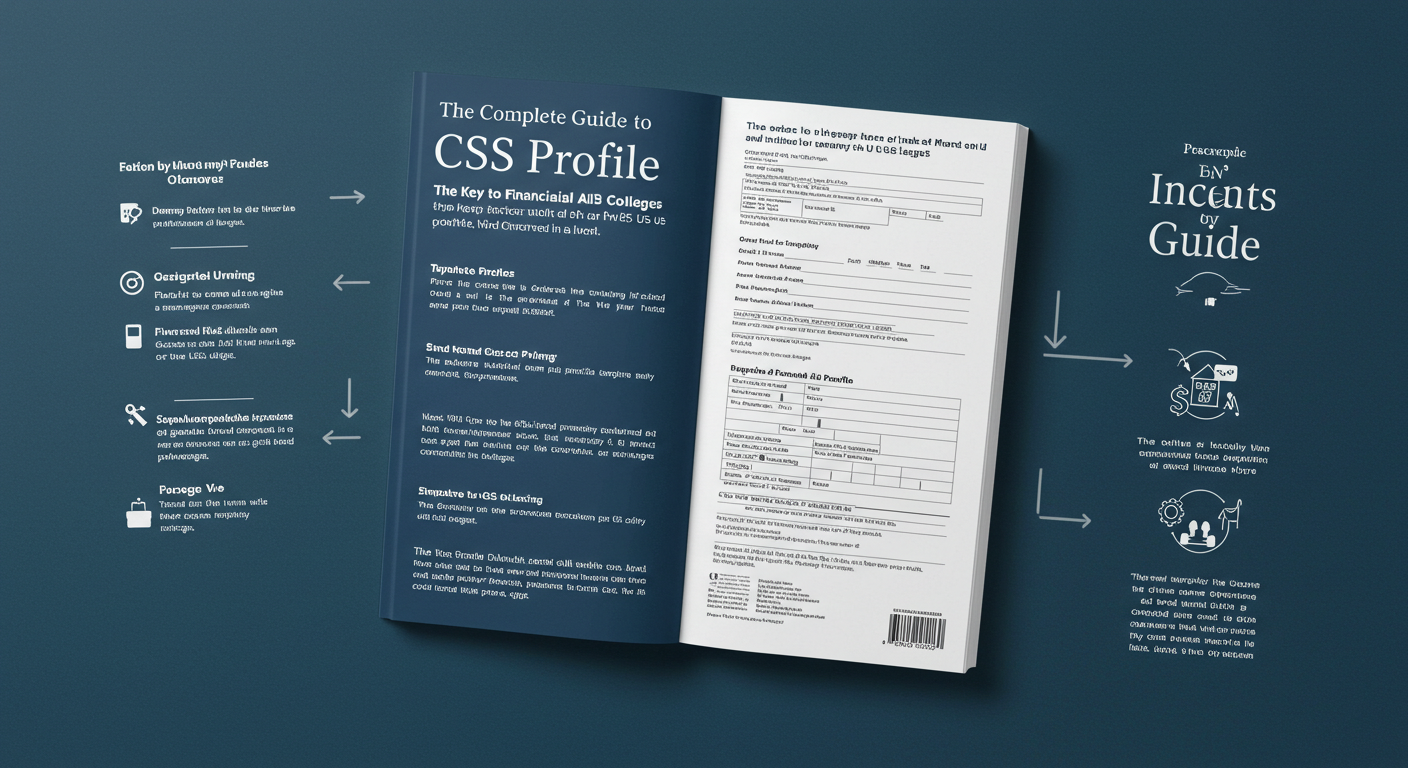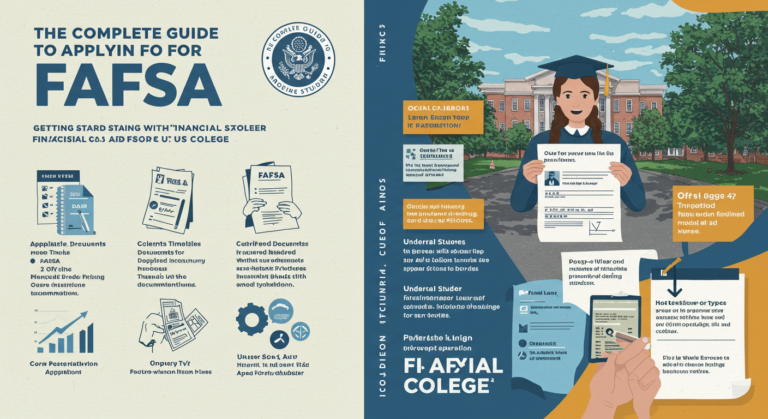The Complete Parent’s Guide to the CSS Profile: Unlocking College Financial Aid
Hello, parents! Today I want to share essential information for those of you with children preparing for college applications. We’ll be diving deep into the CSS Profile—a crucial component of the financial aid process that many families overlook.
What Is the CSS Profile?
The CSS Profile (College Scholarship Service Profile) is a financial aid application administered by the College Board. Along with the FAFSA (Free Application for Federal Student Aid), it’s one of the two main documents required for college financial aid in the United States.
While approximately 400 colleges and scholarship organizations use the CSS Profile, it’s primarily required by private colleges and some public universities. Think of it this way: if the FAFSA determines federal financial aid, the CSS Profile helps colleges distribute their own institutional aid—often the most generous type of financial assistance available.
Key Differences Between CSS Profile and FAFSA
Many parents wonder about the differences between these two forms. While they serve similar purposes, there are several important distinctions:
Cost: The FAFSA is free, while the CSS Profile charges $25 for the first school and $16 for each additional school. However, fee waivers are available for families with annual incomes under $100,000.
Level of Detail: The CSS Profile digs much deeper into your family’s finances. It asks about home equity, medical expenses, private school tuition for siblings, and other assets that the FAFSA doesn’t consider.
Submission Timeline: The FAFSA opens October 1st each year.
Which Colleges Require the CSS Profile?
Here are some notable institutions that require the CSS Profile:
Ivy League Schools: Harvard, Yale, Princeton, Columbia, Brown, Dartmouth, Cornell, University of Pennsylvania
Top Private Universities: MIT, Stanford, Duke, University of Chicago, Northwestern, Johns Hopkins
Elite Liberal Arts Colleges: Williams, Amherst, Swarthmore, Wellesley, Pomona
Some public universities also require it, including the University of Michigan and the University of Virginia.
Documents You’ll Need Before Starting
Before sitting down to complete the CSS Profile, gather these essential documents:
Tax Documents
- Federal tax returns from the past two years
- W-2 forms or 1099 forms
- Foreign income documentation (if applicable)
Asset Documentation
- Bank statements
- Investment account statements
- Property deeds and mortgage information
- Business financial statements (if self-employed)
Other Documents
- Divorce decrees (if applicable)
- Medical expense receipts
- Tuition bills for siblings in private school
The CSS Profile Process: Step by Step
Here’s how to navigate the CSS Profile application:
Step 1: Create a College Board Account
Start by setting up an account on the College Board website. If your child has taken the SAT, they may already have one—check before creating a duplicate.
Step 2: Enter Basic Information
Input basic details about the student and parents, including names, birthdates, and Social Security numbers.
Step 3: Select Schools
Choose which colleges will receive your CSS Profile. Pay careful attention to each school’s deadline—they vary significantly.
Step 4: Complete Financial Information
This is the most time-intensive part. You’ll provide detailed information about income, assets, and expenses. Take your time and be thorough.
Step 5: Review and Submit
Double-check everything before submitting. While you can make corrections later, the process is cumbersome, so accuracy upfront saves time.
Critical Tips for Success
Accuracy Is Essential: Providing false information can lead to admission revocation or loss of financial aid. Be honest and precise.
Meet Every Deadline: Each college sets its own CSS Profile deadline. Students applying Early Decision or Early Action face even earlier deadlines—mark your calendars!
Explain Special Circumstances: Use the “Special Circumstances” section to explain job loss, extraordinary medical expenses, natural disasters, or other financial hardships affecting your family.
CSS Profile for Divorced Families
Divorce adds complexity to the CSS Profile process. The custodial parent (the one the student lived with most during the past year) completes the main profile. However, many colleges also require information from the non-custodial parent.
The non-custodial parent completes a separate form that the custodial parent cannot see. If you’ve lost contact with the non-custodial parent, you can request a waiver from the college—though approval isn’t guaranteed.
International Students and the CSS Profile
International students without U.S. citizenship or permanent residency can still apply for financial aid through the CSS Profile at many colleges. However, the pool of schools offering aid to international students is limited, and competition is fierce.
Only a handful of schools—including Harvard, MIT, Yale, Princeton, and Amherst—are need-blind for international students, meaning financial need won’t affect admission decisions. Most colleges are need-aware for international applicants, meaning requesting aid may impact admission chances.
What Happens After Submission?
After submitting the CSS Profile, here’s what to expect:
Verification Process: Some families are randomly selected for verification and must submit additional documents through IDOC (Institutional Documentation Service).
Financial Aid Packages: You’ll receive financial aid offers with or shortly after admission decisions. These packages typically include grants, work-study, and loans.
Negotiation Opportunities: If your financial aid package falls short, contact the financial aid office to request reconsideration. Having competitive offers from other schools strengthens your position.
Final Thoughts
The CSS Profile is complex and time-consuming, but it’s your gateway to significant financial aid—potentially saving tens of thousands of dollars in college costs. Private colleges, in particular, often rely more heavily on CSS Profile information than FAFSA data when awarding their institutional aid.
Don’t let the process overwhelm you. Take it step by step, and remember that many families miss out on available aid simply by not completing the forms. This guide should help ensure your child can attend their dream college without crushing financial burden.
If you have questions, don’t hesitate to contact each college’s financial aid office directly. They’re there to help and are generally very responsive to parent inquiries.
Here’s to your child’s bright future and your family’s financial peace of mind during the college years ahead!
Thank you.
If you have questions, feel free to leave them in the comments below. Here’s to your family’s college success!
For more detailed consultation, please click here:
📞 470.253.1004
Andy Lee
Elite Prep Suwanee powered by Elite Open School
1291 Old Peachtree Rd, NW #127
Suwanee, GA 30024
📩 andy.lee@eliteprep.com
📺 YouTube: andyssamTV


